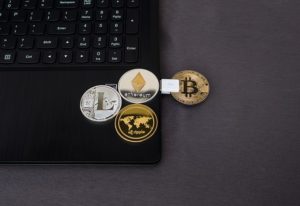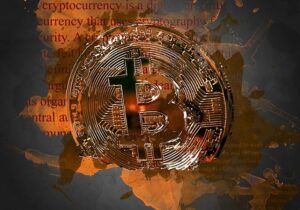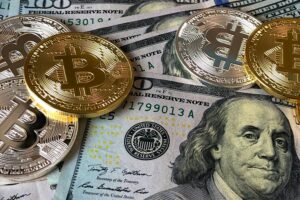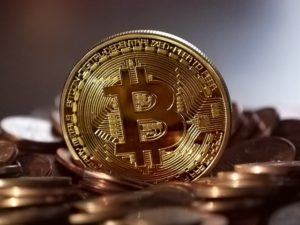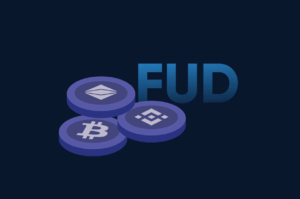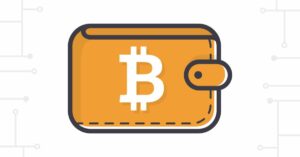Fungible vs. Nonfungible Tokens: What is the Difference

Crypto tokens are classified as fungible and non-fungible tokens (NFTs), according to the fungibility feature indicating identical value amongst the tokens.
In a blockchain, fungible tokens are cryptocurrencies like Bitcoin (BTC), etc., that can be interchanged with another asset of the same value. So a fungible token has the same value as another token, and they are mutually interchangeable.
Meanwhile, non-fungible tokens are digital assets written on smart contracts. A non-fungible token is unique and non-divisible. It denotes ownership of a digital asset and can’t be replicated or exchanged for another because each of them contains something unique in itself.
Read on to learn everything you need to know about fungible and non-fungible tokens and their differences.
What Are Crypto Tokens
Crypto tokens are assets with value. They’re built on another cryptocurrency’s blockchain and don’t have their own underlying blockchain.
A crypto token has a wide range of functionalities in its ecosystem. It can be used as a store of value or exchange and can give its holder voting rights and access to blockchain-based products and services. Tokens can also represent a specific utility or an asset of a company and be given away in a public sale.
Tokens can be of various types, depending on their use cases, including utility tokens, security tokens, governance tokens, etc. We distinguish between fungible and non-fungible tokens.
What Are Fungible Tokens
Fungibility is the fundamental feature of any currency, including cryptocurrencies. Fungible tokens are divisible, non-unique, and interchangeable. These tokens are created so that each fraction of a token is equal to the next. For example, one Bitcoin always equals one Bitcoin and all other Bitcoins.
What Are Non-fungible Tokens
A non-fungible token (NFT) is a blockchain-based unique token that can cryptographically assign and prove ownership to unique physical or digital items like art, digital content, media, real estate, etc. NFTs are designed to be cryptographically verifiable, unique, and easily transferable. They are securely recorded on a blockchain, ensuring the asset is one-of-a-kind and making it difficult to alter or counterfeit NFTs.
NFTs provide immutable proof of ownership and allow individuals to create, buy, and sell digital assets in an easily verifiable way using blockchain technology. Once NFTs have been encoded, they cannot be altered, and their originality and legitimacy are validated through the blockchain.
NFTs aren’t interchangeable because each of the tokens is unique and has a value different than any other asset.
Crypto Kitties is one of the first and most famous examples of a game with collectible non-fungible tokens. Every CryptoKitty is a unique NFT, coded to ERC-721 token standards, and has a set of “genes” that determine its appearance. No two CryptoKitties are the same, and it isn’t possible to break a CryptoKitty into smaller pieces, exchange, and reassemble them to create a CryptoKitty that is equally valuable, unlike fungible tokens like Bitcoin.
Differences Between Fungible Tokens and NFTs
Now that we have a clear understanding of what fungible and nonfungible tokens are, let’s look into the unique features that differentiate them from each other:
- Interchangeability
Fungible tokens are interchangeable with another asset for the same value, unlike non-fungible tokens, which are unique and can’t be interchanged. Metadata and unique identifiers allow NFTs to be associated with particular on-chain addresses.
- Value Transfer
Another essential aspect to consider is value transfer. In the case of fungible tokens, the transfer of value depends on the number of tokens held by the person, while each NFT has a unique ID for easily differentiating from other tokens. The non-fungible token always has a particular owner, and the tokens’ values could be different because of the separate processing of each token.
- Ethereum Token Standards
When discussing the differences between fungible and non-fungible tokens, particular attention should be paid to token standards.
ERC20 acts as a standard set of rules for the Ethereum blockchain. ERC20 tokens are fungible, interchangeable, and represent a single entity.
The ERC-721 is a standard for an NFT, which is unique and can have a different value than another token from the same Smart Contract due to its rarity. ERC721 tokens represent a collection of assets, and ERC721 is not divisible.
- Divisibility
Divisibility is another striking difference between fungible and nonfungible tokens. Fungible tokens can be divided into smaller units, and it doesn’t matter which units you get, as long as the value is the same.
On the other hand, non-fungible tokens cannot be divided. The elementary unit consists of one token only.
Closing Thoughts
Fungible and nonfungible tokens solve various problems for different industries. Fungible crypto tokens store value or act as a medium to buy or sell goods, while NFTs can represent a viable solution for tokenizing ownership and property. Furthermore, converting your digital work into a blockchain-based asset is a game-changer for artists, as they can rest assured that copyright and authenticity will be preserved with NFTs, thanks to blockchain technology.
However, NFTs are still in the early stages of development and are highly volatile – some NFTs have gained immense value over time while others have lost value.

